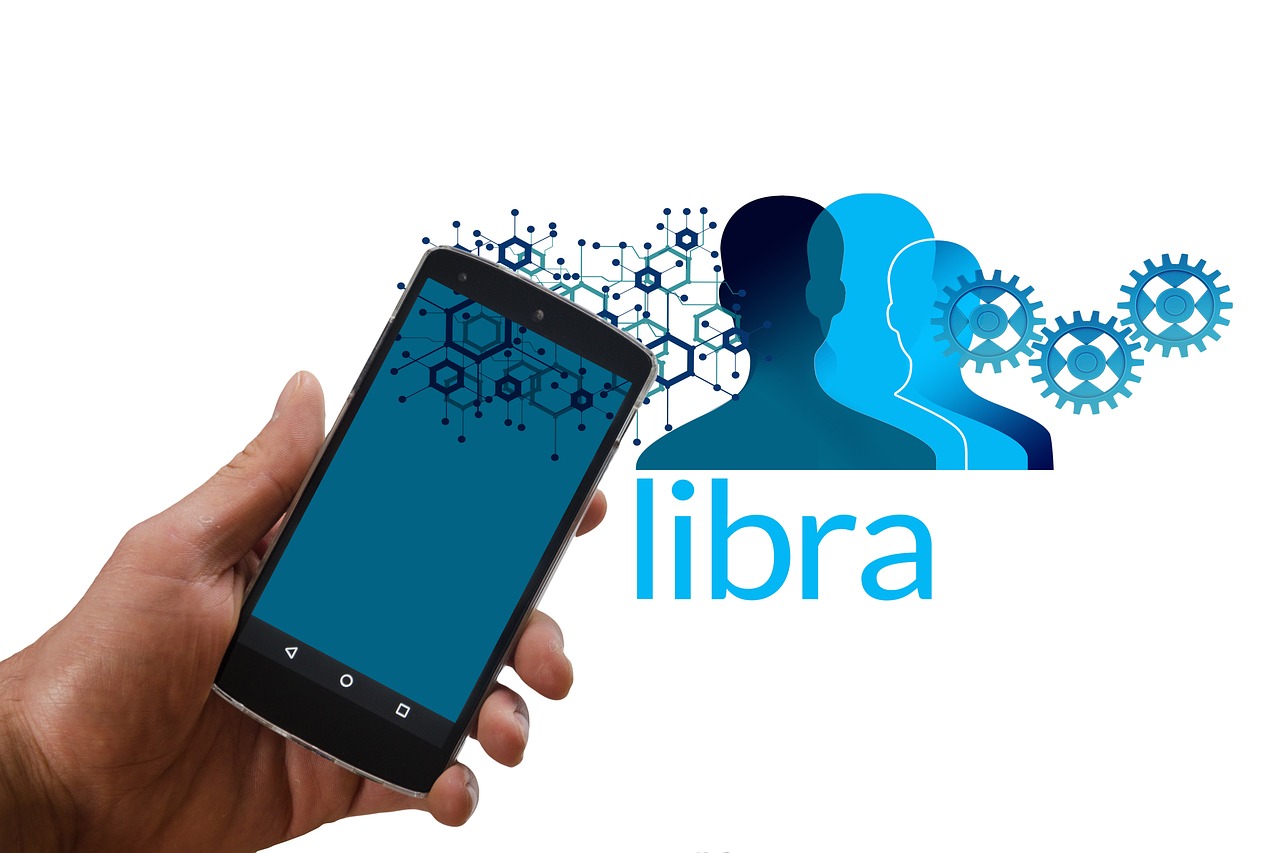Understanding the Challenges of Implementing Blockchain Technology
In today's rapidly evolving digital landscape, blockchain technology stands out as a transformative force, promising to revolutionize industries from finance to supply chain management. However, as organizations rush to adopt this innovative technology, they often encounter a myriad of challenges that can hinder successful implementation. Understanding these challenges is not just beneficial; it's essential for any organization looking to harness the full potential of blockchain.
First and foremost, the technical challenges associated with blockchain are significant. Scalability is a major concern—how can a blockchain system handle an increasing number of transactions without sacrificing speed or efficiency? Moreover, interoperability between different blockchain networks poses another hurdle. Organizations need to ensure that their blockchain solutions can communicate with other systems seamlessly. Additionally, security issues, including the potential for cyberattacks, remain a critical aspect that organizations must address to protect their data and maintain trust.
On the regulatory front, the landscape is equally complex. Organizations must navigate a patchwork of laws and regulations that can vary greatly from one jurisdiction to another. This balancing act between compliance and innovation often feels like walking a tightrope. For instance, organizations must consider data privacy laws, such as the General Data Protection Regulation (GDPR), which introduces specific challenges when it comes to blockchain's immutable nature. How do you reconcile the right to be forgotten with a technology designed to preserve data permanently? This question is just one of many that organizations must grapple with.
Furthermore, the global nature of blockchain complicates matters even more. Different countries have different regulatory frameworks, and organizations operating across borders must ensure compliance with each jurisdiction's specific requirements. This adds layers of complexity to the implementation process, making it imperative for organizations to stay informed and agile in their approach.
But the challenges don't stop there. Organizational resistance can also pose a significant barrier to blockchain adoption. Employees may be hesitant to embrace new technologies, especially if they feel threatened by potential job displacement or if they lack understanding of how blockchain can benefit their work. To address this, leaders must foster a culture of acceptance and provide adequate training to ease the transition.
Another major hurdle is the integration of blockchain with existing legacy systems. Many organizations still rely on outdated technology, and merging these systems with cutting-edge blockchain solutions requires meticulous planning and execution. It's not just about compatibility; it's about maximizing the benefits of blockchain technology while minimizing disruption to ongoing operations.
Financial implications also weigh heavily on organizations considering blockchain. The initial investment can be substantial, leading many to question whether the long-term benefits justify the costs. A careful evaluation of the cost-benefit ratio is essential, and organizations must be prepared for the financial commitment that comes with implementing such a transformative technology.
Lastly, there's the issue of skill gaps. A shortage of professionals with the necessary blockchain expertise can impede progress. Organizations must invest in training and recruitment to bridge this gap and ensure they have the right talent to drive successful blockchain adoption.
- What are the main technical challenges of blockchain implementation? Scalability, interoperability, and security issues are the primary technical challenges organizations face.
- How does GDPR affect blockchain technology? GDPR presents challenges regarding data immutability and the right to be forgotten, requiring organizations to find a balance between compliance and the benefits of blockchain.
- Why is organizational resistance a challenge? Employees may resist adopting new technologies due to fear of job loss or a lack of understanding, necessitating effective change management strategies.
- What financial considerations should organizations keep in mind? Organizations need to evaluate the initial investment against potential long-term savings and benefits when considering blockchain implementation.
- How can organizations address skill gaps in blockchain? Investing in training programs and recruitment efforts is crucial for building a skilled workforce capable of driving blockchain initiatives.

Technical Challenges
Implementing blockchain technology often involves overcoming significant technical challenges that can make or break an organization’s success in adopting this innovative solution. One of the primary hurdles is scalability. As user demand increases, the blockchain must be able to handle a growing number of transactions without sacrificing speed or efficiency. Imagine trying to fill a stadium with fans; if the entrance is too narrow, you’ll have a bottleneck that frustrates everyone. Similarly, blockchain networks face scalability issues that can hinder their performance.
Another critical challenge is interoperability. With various blockchain platforms emerging, ensuring that different systems can communicate and work together seamlessly is paramount. It’s like trying to get two different car brands to share parts; if they don’t fit, you’re left with a garage full of unusable components. Organizations need to find ways to bridge these gaps to unlock the full potential of blockchain technology.
Moreover, security remains a pressing concern. While blockchain is often touted for its security features, vulnerabilities can still exist, especially if the implementation is flawed. Hackers are always on the lookout for weaknesses to exploit, and even a minor oversight can lead to significant data breaches. Organizations must invest in robust security measures, conducting regular audits and employing best practices to protect their blockchain systems.
To visualize these challenges, consider the following table that outlines the key technical challenges along with their implications:
| Technical Challenge | Implications |
|---|---|
| Scalability | Inability to handle high transaction volumes, leading to delays and user frustration. |
| Interoperability | Difficulty in integrating with other systems, limiting the utility of blockchain solutions. |
| Security | Potential for data breaches and loss of trust if vulnerabilities are exploited. |
In summary, while blockchain technology holds immense potential for transforming industries, organizations must navigate these technical challenges carefully. By prioritizing scalability, ensuring interoperability, and focusing on security, businesses can lay a solid foundation for successful blockchain implementation. The journey may not be easy, but with the right strategies in place, the rewards can be substantial.

Regulatory Hurdles
When it comes to implementing blockchain technology, one of the most daunting challenges organizations face is navigating the complex regulatory landscape. The blockchain revolution is not just about technology; it's also about compliance with a myriad of laws and regulations that vary significantly across different jurisdictions. For businesses eager to leverage the benefits of blockchain, this can feel like trying to hit a moving target. How do you ensure that your innovative solutions don't run afoul of existing laws? This balancing act between fostering innovation and adhering to regulatory requirements is a tightrope walk that demands careful strategy and foresight.
One of the primary concerns organizations encounter is the need for data privacy. With blockchain's inherent transparency and immutability, sensitive information can be exposed in ways that may conflict with privacy laws. For instance, consider the implications of the General Data Protection Regulation (GDPR) in the European Union. This regulation grants individuals the right to have their personal data erased, which poses a significant challenge for blockchain's unchangeable nature. How can organizations reconcile these two seemingly opposing forces? This question often keeps compliance officers awake at night.
Addressing data privacy in the context of blockchain technology requires a multifaceted approach. Organizations must consider how sensitive information is stored and shared on the blockchain while ensuring compliance with privacy laws. This involves not only understanding the legal frameworks but also implementing technical solutions that allow for privacy preservation. For example, some organizations are exploring the use of zero-knowledge proofs, which can allow transactions to be verified without revealing the underlying data. However, the adoption of such technologies is still in its infancy, and organizations need to stay ahead of the curve.
As mentioned earlier, the challenges posed by the GDPR are particularly pronounced. The regulation's right to be forgotten conflicts with blockchain's nature of permanence. Organizations must develop strategies that allow them to comply with GDPR while still leveraging the benefits of blockchain. This could involve creating permissioned blockchains where access to data is controlled, or utilizing off-chain storage solutions for sensitive information. The key is to find a balance that satisfies both regulatory demands and the innovative potential of blockchain technology.
Another layer of complexity arises from the global nature of blockchain technology. Organizations must navigate a patchwork of regulations across different countries, each with its own set of rules and compliance requirements. This can lead to a situation where a blockchain solution that is compliant in one jurisdiction may be illegal in another. To tackle these cross-border regulatory challenges, organizations need to engage legal experts who understand the nuances of international law and can help craft solutions that are compliant across multiple regions.
Ultimately, the regulatory hurdles surrounding blockchain technology require organizations to be proactive and informed. They must stay up-to-date with the evolving legal landscape and be willing to adapt their strategies as necessary. Collaboration with regulators, industry groups, and legal advisors can help facilitate smoother navigation through these challenges. By fostering a culture of compliance and innovation, organizations can not only survive but thrive in the blockchain era.
- What are the main regulatory challenges for blockchain technology? The main challenges include data privacy concerns, compliance with GDPR, and navigating cross-border regulations.
- How can organizations ensure GDPR compliance while using blockchain? Organizations can explore options like permissioned blockchains and off-chain storage to balance compliance with the benefits of blockchain.
- Why is cross-border regulation a challenge for blockchain? Because blockchain operates globally, organizations must comply with different laws and regulations in each jurisdiction they operate in.

Data Privacy Concerns
In the ever-evolving landscape of technology, data privacy stands out as a critical concern, especially when it comes to blockchain technology. The very features that make blockchain appealing—its transparency and immutability—can also create significant challenges regarding how sensitive information is handled. Imagine a world where every transaction is permanently recorded and accessible to everyone. While this can enhance trust and accountability, it also raises questions about who can access that data and how it can be protected.
Organizations looking to implement blockchain must grapple with the duality of these characteristics. On one hand, they want to leverage the benefits of a transparent system; on the other, they must ensure that they comply with stringent privacy laws. This balancing act is not only complex but also essential for maintaining user trust. For instance, if a company uses blockchain to store customer information, it must address how that data is shared and who has access to it. This is particularly important in sectors like finance and healthcare, where sensitive information is abundant.
One of the most pressing issues in this context is how to ensure compliance with existing privacy regulations, such as the General Data Protection Regulation (GDPR). The GDPR emphasizes the importance of data protection and grants individuals rights over their personal information. However, the immutable nature of blockchain can conflict with these rights, especially the right to be forgotten. Organizations must find innovative ways to navigate these conflicting requirements, perhaps by employing techniques like data encryption or creating off-chain storage solutions for sensitive data.
Furthermore, the global nature of blockchain technology complicates compliance with varying regulations across jurisdictions. Organizations must be aware of the different legal frameworks governing data privacy in each country they operate in. For example, while the EU has stringent data protection laws, other regions may have less stringent regulations. This disparity can create a minefield for organizations trying to implement blockchain solutions globally. To successfully navigate these waters, companies must invest in legal expertise and stay updated on international regulations.
Additionally, organizations should consider the following strategies to address data privacy concerns:
- Implementing Privacy by Design: Integrate data protection measures into the development of blockchain systems from the outset.
- Utilizing Permissioned Blockchains: Consider using permissioned blockchains where access to data can be controlled and restricted.
- Regular Audits: Conduct audits to ensure compliance with data privacy laws and to identify vulnerabilities.
In conclusion, while blockchain technology offers transformative potential, organizations must tread carefully when it comes to data privacy. By understanding and addressing these concerns proactively, they can harness the benefits of blockchain while safeguarding sensitive information and maintaining compliance with legal standards.
1. What is the main concern regarding data privacy in blockchain?
The main concern is how sensitive information is stored and shared, given blockchain's transparency and immutability, which can conflict with privacy regulations.
2. How does GDPR affect blockchain implementation?
GDPR poses challenges for blockchain because its immutable nature conflicts with the right to be forgotten, requiring organizations to find innovative solutions for compliance.
3. What strategies can organizations use to address data privacy in blockchain?
Organizations can implement privacy by design, use permissioned blockchains, and conduct regular audits to ensure compliance with data privacy laws.

GDPR Compliance
The General Data Protection Regulation (GDPR) has significantly transformed how organizations handle personal data, and this transformation poses unique challenges for the implementation of blockchain technology. At its core, GDPR emphasizes the protection of individual privacy rights, which can seem at odds with the very nature of blockchain—where data is immutable and transparent. So, how do organizations reconcile these conflicting principles?
One of the most pressing issues is the notion of the right to be forgotten. Under GDPR, individuals can request the deletion of their personal data, but the immutable nature of blockchain makes this a complex endeavor. Once data is recorded on a blockchain, it cannot simply be erased. For organizations, this creates a dilemma: how can they leverage the benefits of blockchain technology while still adhering to GDPR requirements?
To navigate this challenge, organizations must consider several strategies:
- Data Minimization: Only the necessary data should be stored on the blockchain. This approach reduces the amount of personal data exposed to the risks of immutability.
- Off-Chain Solutions: Sensitive data can be stored off-chain while only the hash or a reference to that data is stored on-chain. This way, organizations can maintain the integrity of the data without compromising the right to be forgotten.
- Smart Contracts: Implementing smart contracts can automate compliance processes, ensuring that data handling aligns with GDPR principles.
Additionally, organizations must conduct thorough Data Protection Impact Assessments (DPIAs) to evaluate how their blockchain implementation impacts data privacy. This proactive approach not only helps in identifying potential compliance issues but also demonstrates a commitment to safeguarding personal data.
Furthermore, engaging with legal experts who specialize in both blockchain and data protection law can provide invaluable guidance. By understanding the nuances of GDPR in the context of blockchain, organizations can develop robust policies and procedures that ensure compliance while still embracing the innovative potential of this technology.
In summary, while GDPR compliance presents significant challenges for blockchain implementation, organizations can adopt strategic measures to align their practices with regulatory requirements. By prioritizing data privacy and leveraging innovative solutions, businesses can successfully navigate the complexities of blockchain technology and GDPR, paving the way for a more secure and compliant future.
Q1: Can blockchain technology be fully compliant with GDPR?
A1: Yes, but organizations need to implement specific strategies, such as data minimization and off-chain storage, to ensure compliance.
Q2: What is the right to be forgotten?
A2: It is a GDPR principle that allows individuals to request the deletion of their personal data, which can be challenging for immutable blockchain systems.
Q3: How can smart contracts help with GDPR compliance?
A3: Smart contracts can automate compliance processes, ensuring that data handling aligns with GDPR requirements.
Q4: Why is it important to conduct Data Protection Impact Assessments (DPIAs)?
A4: DPIAs help organizations identify potential compliance issues and demonstrate a commitment to protecting personal data.

Cross-Border Regulations
When diving into the world of blockchain technology, one of the most perplexing challenges organizations face is navigating the maze of . With blockchain's inherent global nature, the implications of operating across different jurisdictions can be daunting. Each country has its own set of rules, and these can vary significantly, leading to a patchwork of compliance requirements that organizations must adhere to.
Imagine trying to navigate a complex web where each thread represents a different regulatory framework. For instance, a blockchain solution that operates in the European Union may need to comply with GDPR, while simultaneously addressing the financial regulations of the United States. This creates a scenario where organizations must be not only aware of these laws but also agile enough to adapt to changes as they arise.
Furthermore, the lack of a unified global regulatory framework for blockchain exacerbates the situation. Organizations must often engage in extensive legal consultations to ensure they are not only compliant but also able to innovate without running afoul of the law. This can lead to increased costs and extended timelines for blockchain implementation. For instance, a company looking to launch a blockchain-based service that spans multiple countries might find itself facing:
- Inconsistent Regulations: Different countries may have conflicting laws regarding data ownership and sharing.
- Licensing Requirements: Some jurisdictions may require specific licenses to operate blockchain services.
- Tax Implications: Understanding how transactions will be taxed across borders can be a complex task.
To effectively navigate these cross-border regulatory challenges, organizations can adopt several best practices:
- Engage Legal Experts: Consulting with legal professionals who specialize in international blockchain law can help clarify obligations.
- Monitor Regulatory Changes: Staying informed about changes in regulations can prevent compliance issues down the line.
- Develop Flexible Strategies: Building adaptable systems that can evolve with changing regulations is crucial for long-term success.
In conclusion, while the road to implementing blockchain technology across borders is fraught with challenges, understanding the regulatory landscape is the first step toward successful integration. Organizations that proactively address these issues will not only mitigate risks but also position themselves as leaders in the blockchain space.
Q: What are cross-border regulations in the context of blockchain?
A: Cross-border regulations refer to the different legal frameworks and compliance requirements that organizations must navigate when operating blockchain solutions across multiple countries.
Q: Why is it important to understand cross-border regulations?
A: Understanding these regulations is crucial for ensuring compliance, avoiding legal pitfalls, and successfully launching blockchain initiatives in various jurisdictions.
Q: How can organizations prepare for cross-border regulatory challenges?
A: Organizations can prepare by engaging legal experts, monitoring regulatory changes, and developing flexible strategies that can adapt to new laws.

Organizational Resistance
Implementing blockchain technology is not just about having the right tools and systems; it also involves a significant cultural shift within an organization. Often, employees may feel threatened by the introduction of new technologies, fearing that their jobs could be at risk or that they may not possess the necessary skills to adapt to this change. This can manifest in various forms, from passive indifference to active opposition. Understanding the root causes of this resistance is crucial for leaders aiming to facilitate a smoother transition.
One of the primary reasons for resistance is the fear of the unknown. When blockchain technology is introduced, many employees may not fully understand how it works or how it will impact their daily tasks. This lack of knowledge can lead to skepticism and reluctance to embrace the new system. To combat this, organizations should prioritize education and training. By providing comprehensive training programs that demystify blockchain and showcase its benefits, organizations can help alleviate fears and build confidence among their workforce.
Additionally, there may be a sense of loss regarding established processes and workflows. Employees who have spent years mastering traditional systems may feel that their expertise is being disregarded. To address this concern, it's essential for leaders to communicate the value of blockchain technology clearly and how it can enhance existing workflows rather than replace them. Engaging employees in the implementation process can also foster a sense of ownership, making them more likely to embrace the change.
Organizational structure plays a vital role in how well new technologies are adopted. Hierarchical organizations may struggle more with implementing blockchain due to rigid structures that resist change. In contrast, more agile organizations tend to adapt more readily. To promote acceptance, organizations should consider adopting a more collaborative approach to decision-making, involving employees from various departments to ensure diverse perspectives are considered. This can lead to a more unified approach and reduce resistance.
Furthermore, establishing a clear vision and strategy for blockchain integration is essential. Employees are more likely to support initiatives when they understand the long-term goals and how their roles contribute to achieving those goals. Regular updates on the progress of blockchain implementation can also keep employees informed and engaged, reducing uncertainty and resistance.
In summary, overcoming organizational resistance to blockchain technology requires a multifaceted approach that includes education, clear communication, and inclusive decision-making. By addressing the concerns and fears of employees, organizations can pave the way for successful blockchain adoption and reap the benefits of this transformative technology.
- What is blockchain technology? Blockchain technology is a decentralized digital ledger that records transactions across many computers in such a way that the registered transactions cannot be altered retroactively, ensuring security and transparency.
- Why do organizations face resistance when implementing blockchain? Resistance often stems from fear of the unknown, a sense of loss regarding established processes, and a lack of understanding of how blockchain technology works.
- How can organizations overcome resistance to blockchain? Organizations can overcome resistance by providing education and training, engaging employees in the implementation process, and communicating a clear vision for how blockchain will enhance existing workflows.
- What role does organizational structure play in blockchain adoption? Organizations with more hierarchical structures may face greater challenges in adopting blockchain due to rigid processes, while agile organizations may adapt more easily.

Integration with Legacy Systems
Integrating blockchain technology with existing legacy systems poses a significant challenge for many organizations. Imagine trying to fit a square peg into a round hole; that's what it can feel like when attempting to merge old technology with cutting-edge solutions. Legacy systems, which have been in place for years, often do not have the flexibility or capability to work seamlessly with the decentralized nature of blockchain. This integration process requires careful planning and execution to ensure compatibility and maximize the benefits of blockchain technology.
One of the primary issues organizations face is the data silos created by legacy systems. These silos can lead to inconsistencies and inefficiencies in data management. When implementing blockchain, organizations must find ways to bridge these gaps. This often involves:
- Assessing the current data architecture
- Identifying critical data flows that need to be integrated
- Developing APIs or middleware solutions to facilitate communication between the blockchain and legacy systems
Another challenge is the cultural resistance that can arise within organizations. Employees may be hesitant to adopt new technologies, especially if they are comfortable with existing systems. To overcome this resistance, organizations should invest in training and change management initiatives. By fostering a culture of innovation and providing the necessary skills to employees, organizations can ease the transition to blockchain technology.
Moreover, organizations must also consider the cost implications associated with integrating blockchain with legacy systems. This process can be expensive, requiring not only financial resources but also time and effort. Organizations must evaluate the cost-benefit ratio and consider long-term savings versus initial setup expenses. It’s essential to conduct a thorough analysis to understand the potential return on investment (ROI) before diving into the integration process.
Lastly, the skill gap in blockchain technology can further complicate integration efforts. Finding professionals who are not only skilled in blockchain but also understand legacy systems can be a daunting task. Organizations should consider partnering with educational institutions or offering training programs to develop the necessary skills within their teams. By addressing these skill gaps, organizations can enhance their chances of successful blockchain implementation.
- What are legacy systems? Legacy systems are older software or hardware systems that are still in use, often because they perform critical business functions.
- Why is integrating blockchain with legacy systems challenging? The challenge arises from differences in technology, data management practices, and potential resistance from employees accustomed to existing systems.
- How can organizations overcome cultural resistance? Organizations can overcome cultural resistance by investing in training, promoting a culture of innovation, and clearly communicating the benefits of blockchain technology.
- What are the cost implications of integration? The costs can vary widely based on the complexity of the legacy systems and the scope of the blockchain implementation. A thorough cost-benefit analysis is essential.

Cost Implications
When it comes to implementing blockchain technology, one of the most daunting aspects organizations face is the financial investment required. This isn't just about the initial setup costs; it's about understanding the long-term financial implications that come with adopting such a transformative technology. Organizations need to weigh the cost-benefit ratio carefully to ensure that the investment aligns with their strategic goals.
First, let's break down some of the primary cost factors associated with blockchain implementation:
- Initial Setup Costs: These can include hardware, software, and the costs associated with hiring skilled professionals who can manage the implementation process.
- Ongoing Maintenance: Blockchain systems require continuous updates and maintenance, which can lead to recurring costs that organizations must plan for.
- Training and Development: As blockchain is still a relatively new technology, investing in training programs for existing staff or hiring new talent with blockchain expertise can be substantial.
Now, consider this: while the upfront costs may seem overwhelming, the long-term savings and efficiencies gained through blockchain can often outweigh these initial expenses. For instance, blockchain can significantly reduce transaction costs by eliminating intermediaries, streamline processes, and enhance transparency, leading to fewer disputes and lower operational costs.
Moreover, organizations must also account for the opportunity costs of not adopting blockchain technology. In a rapidly evolving digital landscape, falling behind competitors who leverage blockchain could mean lost market share and diminished relevance. Therefore, the cost implications of implementing blockchain should not be viewed in isolation but rather as part of a broader strategic vision.
To help visualize the potential costs versus benefits, consider the following table:
| Cost Factor | Estimated Cost | Potential Benefits |
|---|---|---|
| Initial Setup | $100,000 - $500,000 | Streamlined processes, reduced transaction times |
| Ongoing Maintenance | $20,000 - $100,000/year | Improved security, reduced fraud |
| Training | $10,000 - $50,000 | Enhanced employee skills, increased innovation |
In conclusion, while the of blockchain implementation can be significant, the potential for increased efficiency, reduced costs in the long run, and the ability to stay competitive in the market can make it a worthwhile investment. Organizations must carefully analyze their unique circumstances, conduct thorough cost-benefit analyses, and be prepared for both the challenges and rewards that come with this innovative technology.
What are the main costs associated with implementing blockchain technology?
The main costs include initial setup costs, ongoing maintenance expenses, and training and development costs for staff.
How can organizations justify the high initial costs of blockchain?
Organizations can justify the costs by evaluating the long-term savings, increased efficiency, and competitive advantages that blockchain can provide.
Are there hidden costs in blockchain implementation?
Yes, organizations should be aware of potential hidden costs, such as compliance with regulations, opportunity costs of not adopting the technology, and the need for ongoing support and upgrades.

Skill Gaps
One of the most pressing challenges organizations face when implementing blockchain technology is the significant skill gap in the workforce. As the demand for blockchain solutions skyrockets, finding professionals who possess the necessary expertise becomes increasingly difficult. This shortage can lead to delays in project timelines and hinder the overall success of blockchain initiatives.
Many organizations are caught in a vicious cycle: they want to adopt innovative technologies like blockchain but struggle to find the right talent to drive these initiatives forward. The complexity of blockchain systems requires not only a solid understanding of the technology itself but also knowledge of related fields such as cryptography, distributed systems, and data privacy regulations. This multifaceted skill set is rare, creating a bottleneck in the hiring process.
Moreover, the rapid evolution of blockchain technology means that even seasoned professionals need to continuously update their skills to keep pace. Training programs and workshops can help bridge this gap, but they often require a significant investment of time and resources. Organizations must prioritize ongoing education and development to ensure their teams remain competitive in this fast-moving landscape.
To effectively tackle the skill gap, companies can adopt several strategies:
- Invest in Training: Developing in-house training programs tailored to blockchain technology can empower existing employees to upskill and adapt to new demands.
- Partner with Educational Institutions: Collaborating with universities and technical schools can create a pipeline of new talent equipped with the latest blockchain knowledge.
- Encourage Knowledge Sharing: Fostering a culture of collaboration and knowledge sharing within teams can enhance learning and innovation.
Ultimately, addressing the skill gap in blockchain technology is not just about filling positions—it's about building a resilient workforce that can navigate the complexities of this transformative technology. Organizations that invest in their employees' development will likely see a higher rate of successful blockchain implementation and can position themselves as leaders in their respective industries.
Q: What are the main skills needed for blockchain professionals?
A: Key skills include knowledge of cryptography, distributed ledger technology, programming languages (like Solidity for Ethereum), and an understanding of data privacy regulations.
Q: How can organizations overcome the skill gap in blockchain?
A: Organizations can invest in training programs, partner with educational institutions, and promote a culture of knowledge sharing to bridge the skill gap.
Q: Is blockchain training expensive?
A: While some training programs can be costly, many online resources and courses offer affordable options to help professionals gain blockchain expertise.
Frequently Asked Questions
- What are the main technical challenges of implementing blockchain technology?
Implementing blockchain technology comes with a host of technical challenges, including scalability, interoperability, and security issues. Organizations need to ensure that their blockchain solutions can handle increased transaction loads, communicate effectively with other systems, and maintain robust security measures to protect sensitive data.
- How do organizations navigate regulatory hurdles when adopting blockchain?
Navigating the regulatory landscape can be tricky for organizations looking to adopt blockchain. They must ensure compliance with existing laws while still fostering innovation. This often means staying informed about changing regulations and working closely with legal experts to align their blockchain initiatives with regulatory requirements.
- What are the data privacy concerns associated with blockchain technology?
Data privacy is a significant concern in blockchain implementation. Organizations must figure out how to store and share sensitive information while complying with privacy laws. This is especially challenging with blockchain's transparency and immutability features, which can conflict with privacy regulations.
- How does GDPR affect blockchain implementation?
The General Data Protection Regulation (GDPR) presents unique challenges for blockchain technology. The immutable nature of blockchain can conflict with individuals' rights under GDPR, such as the right to be forgotten. Organizations must find ways to balance these requirements while leveraging blockchain's benefits.
- What challenges arise from cross-border regulations in blockchain?
Blockchain operates on a global scale, which complicates compliance with varying regulations across different jurisdictions. Organizations must be aware of and navigate these cross-border regulatory challenges to ensure their blockchain solutions are compliant and effective worldwide.
- Why is there often organizational resistance when implementing blockchain?
Resistance to change is a common issue when introducing new technologies like blockchain. Employees may be hesitant due to fear of the unknown or concerns about job security. Understanding these cultural and structural barriers can help leaders facilitate smoother transitions and promote acceptance of blockchain technology.
- What are the implications of integrating blockchain with legacy systems?
Integrating blockchain with existing legacy systems can be a daunting task. Organizations need to plan carefully to ensure compatibility and maximize the benefits of blockchain technology. This often involves evaluating current systems and determining how blockchain can enhance or replace them.
- What are the cost implications of implementing blockchain?
The financial investment required for blockchain implementation can be substantial. Organizations must weigh the initial setup costs against potential long-term savings and benefits. A thorough cost-benefit analysis is essential to ensure that the investment in blockchain technology pays off.
- How can organizations address the skill gaps in blockchain expertise?
A shortage of skilled professionals with blockchain expertise is a significant challenge for many organizations. To address this skill gap, companies can invest in training programs for existing staff or focus on recruiting new talent with the necessary skills to ensure successful blockchain adoption and implementation.



















